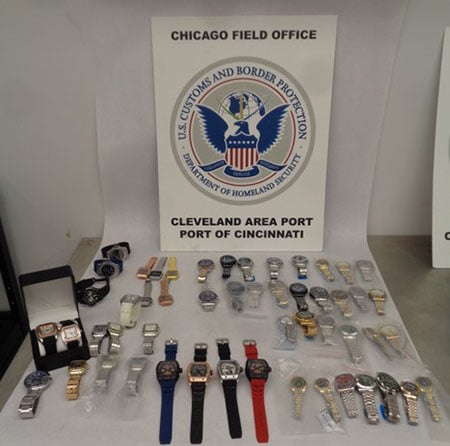By Paul A. Tenkotte, PhD
Special to NKyTribune
“The public mind has for some time appeared to be interested and alarmed, relative to the cession of Louisiana to the French. Vague conjectures have been hastily formed, and as hastily abandoned by all parties. It is however generally agreed that the expected cession will be a measure destructive to the peace, commercial interests, and prosperity of this country.”
— “Louisiana,” Frankfort [KY] Guardian of Freedom, September 8, 1802, p. 2.
The Ohio and Mississippi Rivers were the commercial arteries feeding the expansion of the young United States in the late 1790s and the early 1800s. In 1792 Kentucky became the 15th state of the newborn United States, followed by Tennessee in 1796 and Ohio in 1803. The safety of their residents, however, was far from secure, as evidenced in this 1802 quote from the Guardian of Freedom. That uncertainty largely focused on the immense territory of Louisiana, lying principally west of the Mississippi River.

Throughout the 1700s, the North American continent was the scene of active colonization by the competing European powers of Great Britain, France, and Spain. In 1754 hostilities erupted between Great Britain and France over control of the trans-Appalachian Mountain territory of the Ohio River region. Called the French and Indian War in US History, the conflict escalated into what many historians regard as the first truly “world war,” the Seven Years’ War (1756–1763). It was fought worldwide, as far away as India, and literally reshaped the balance of power in Europe.
The Seven Years’ war pitted Great Britain and its allies against the alliance of France, Spain, Austria and others. Victorious, Great Britain clearly emerged as the world’s preeminent military power. By the terms of the Treaty of Paris of 1763, France lost virtually all of its North American empire, with the exception of New Orleans and two islands off the coast of Newfoundland, Saint-Pierre and Miquelon. The remainder of the French colonial empire east of the Mississippi River, including the rich Ohio River valley and Canada, became British. Britain also gained Spanish Florida. Meanwhile, in an initially secret treaty between France and Spain in 1762 — the Treaty of Fontainebleau — France ceded New Orleans and the extensive territory of Louisiana to Spain in compensation for dragging their Spanish relatives into the Seven Year’s War.
In one of the great ironies of history, however, Britain’s North American territorial gains would ultimately lead to one of its greatest colonial losses. The newly expanded British colonies in North America meant that Britain would have to protect its expanded imperial territories. That would equate to more armed forces and heavier taxation, neither of which American colonists welcomed.

In 1775, sparked by increasing taxation and standing armies, the American War for Independence (also known as the American Revolutionary War) began. The year 1777 proved to be a tipping point. In September of that year, the British captured and occupied the city of Philadelphia, the home of Independence Hall and the Second Continental Congress (1775–1781). On the other hand, in September-October 1777, American victory at the multiple engagements of the Battles of Saratoga (New York) provided the validation that France needed to become a full-fledged American ally. In 1778, the French signed a Treaty of Amity and Commerce with the American colonists, recognizing the United States as a sovereign nation.
They followed it with the Treaty of Alliance, providing the US with valuable aid and assistance. Perhaps even more significant than the Treaty of Alliance, however, was that France declared a whole new war against Britain in 1778, the Anglo-French War (1778–1783; called the Bourbon War in Great Britain). A year later, the Spanish joined the conflict on France’s side, hoping to regain Spanish Florida ceded to Britain at the Treaty of Paris of 1763. Spanish armed forces successfully achieved their purpose, taking control of the lower reaches of the Mississippi River, retaking Fort Charlotte (now Mobile, Alabama), and occupying Pensacola in British Florida. The Spanish also raised needed funds in Havana, Cuba for the ultimate American victory at Yorktown in 1781.
Meanwhile, the Anglo-French War raged worldwide, principally as a naval war in the West Indies (the Caribbean), the East Indies (the Indian Ocean), the English Channel, and the Mediterranean Sea. The French and Spanish even attempted, but failed, at invading Britain across the English Channel in 1779. A series of treaties, collectively called the Peace of Paris, were signed in 1783, recognizing the independence of the United States, establishing a boundary between the US and British Canada, and ceding British East and West Florida to Spain. In July 1784, however, controlling both sides of the lower Mississippi River, Spain closed navigation to “non-Spanish vessels,” angering the Anglo settlers of the Ohio and Mississippi River watershed (“Louisiana: European Explorations and the Louisiana Purchase. A Special Presentation from the Geography and Map Division of the Library of Congress,” p. 50; pdf available here; hereafter LOC).
Benefitting from vast French aid, one would assume that foreign relations between the United States and France would be secure for years. However, that was not the case. Carrying serious financial debt largely caused by the costs of the American War for Independence and the Anglo-French War, King Louis XVI of France (1774–1792) convened the Estates General in 1789 to raise needed funds. The French monarchy had last called the assembly together in 1614. Not surprisingly, the Estates General demanded major reforms, leading to the French Revolution.

red dot marks Cincinnati. Chicago, IL: Modern School Supply Co., [1919], in the
collection of the US Library of Congress.
At first Americans were generally supportive of the French Revolution. However, as it devolved into an increasingly radicalized and violent revolution, the Federalist Party began to fear its possible repercussions elsewhere. As French revolutionary forces declared war against European powers beginning in 1792, President Washington issued a Proclamation of Neutrality in 1793. At the time, Thomas Jefferson served as Secretary of State.
Nevertheless, US neutrality seemed imbalanced according to the French perspective. In 1794 the United States signed Jay’s Treaty with Great Britain, removing British troops from the Northwest Territory, offering the US “most favored nation” status as a trading partner, and resolving various other disputes remaining from the Peace of Paris in 1783. Many Americans, among them Thomas Jefferson, vehemently opposed the treaty. The following year, in 1795, Spain signed Pinckney’s Treaty (Treaty of San Lorenzo) with the United States. The treaty: recognized American boundary claims at the 31st parallel . . . established commercial relations with Spain; prohibited the Spanish from inciting Native American raids within federal territory; and, most importantly, furnished citizens of the United States and Spain with unimpeded navigation of the Mississippi River, with the right to deposit their goods duty free at the port of New Orleans for transshipment and export, subject to renewal after three years, or if suspended for any reason, relocated to another convenient site in Spanish territory (LOC, pp. 52-53).
Upset by Jay’s Treaty, France commissioned privateers to attack American merchant ships. According to the NCpedia, privateers “were privately owned and manned ships authorized by their governments during wartime to attack and capture enemy shipping vessels.
Documents called ‘letters of marquee’ officially spelled out their authority to equip a ship with arms and seize another nation’s citizens or goods” As a result, an undeclared naval Quasi-War (1798–1801) between France and the US erupted. (“Privateers,” NCpedia, 2006, https://www.ncpedia.org/privateers).
In 1798, during the Quasi-War, the Federalist-controlled US Congress passed a series of four acts, collectively termed the Alien and Sedition Acts, “authorizing the president to deport ‘aliens,’ and permitted their arrest, imprisonment and deportation during wartime.” Meanwhile, the Sedition Act “made it a crime for American citizens to ‘print, utter, or publish . . . any false, scandalous, and malicious writing’ about the government” (“Alien and Sedition Acts 1798,” Milestone Documents, National Archives).
Ended in December 1801, with official congressional approval of the signed Convention of 1800 (Treaty of Mortefontaine, signed on September 30, 1800), the Quasi-War with France had elevated the concerns of the residents of the Ohio and Mississippi River valleys to France’s actual intentions. Did France hope to reestablish its old North American empire, largely lost in 1763?
The possibility seemed more and more likely. “On October 1, 1800, within 24 hours of signing a peace settlement with the United States, First Consul of the Republic of France Napoleon Bonaparte, acquired Louisiana from Spain by the secret treaty of San Ildefonso” [Third Treaty of San Ildefonso]. Since France had secretly ceded Louisiana to Spain in 1762, Spain’s 1800 return of the of the territory to France was called a “retrocession.”
Of course, secret treaties eventually come to the light of day. Newly elected president Thomas Jefferson (president 1801–1809) was visibly disturbed when Britain shared it with the United States. Although long a Francophile and a former US ambassador to France, Jefferson reevaluated his opinions of the French government to align with concerns of the Anglo settlers of the Ohio and Mississippi River valleys. Indeed, Napoleon was actively pursuing a resurrection of the French empire in North America. In 1801 he sent his brother-in-law to the former French colony of Saint-Domingue (now Haiti) in the Caribbean to retake it from the revolutionary leader Toussaint L’Ouverture.
Initially successful in their attempts, the French attempted to reestablish slavery. Subsequently violence ensued, with the French retreating their forces in 1803.
For those living and trading along the Ohio and Mississippi valleys, the news worsened.

The secret retrocession of Louisiana to France—although spelled out in the Third Treaty of San Ildefonso in 1800 — was not officially effectuated until October 1802. Therefore, a Spanish official, citing the expiration and nonrenewal of Pinkney’s Treaty, closed the port of New Orleans to American trade in the fall of 1802.
President Jefferson sent US minister to France, Robert R. Livingston, to France to inquire about the possibility of purchasing New Orleans. Surprisingly, with French failures in Saint-Domingue and the possibility of war in Europe (the Napoleonic Wars would begin in May 1803), Napoleon abandoned his imperial ambitions in North America. In April 1803, James Monroe joined Livingston, and the two negotiated the purchase of Louisiana from France for $15 million:
Despite protests from Spain and the Federalists, the US Senate ratified the Louisiana Purchase on 17 October 1803. US commissioners William C. C. Claiborne and James Wilkinson formally accepted the transfer on 20 December, following a similar ceremony on 30 November when the Spanish commissioner officially delivered Louisiana to the French prefect, Pierre Clément Lausset (“Third Treaty if San Ildefonso,” Mississippi Encyclopedia).
Immense in size, the Louisiana Purchase included about 828,000 square miles. Only months earlier, in February 1803, Ohio became the 17th state of the union, part of the old Northwest Territory. The way was finally open for the full development of the Ohio and Mississippi watersheds.
Paul A. Tenkotte, PhD is Editor of the “Our Rich History” weekly series and Professor of History at Northern Kentucky University (NKU). He can be contacted at tenkottep@nku.edu. Tenkotte also serves as Director of the ORVILLE Project (Ohio River Valley Innovation Library and Learning Engagement).






















Interesting article. Good job. Nice to see information about local history.